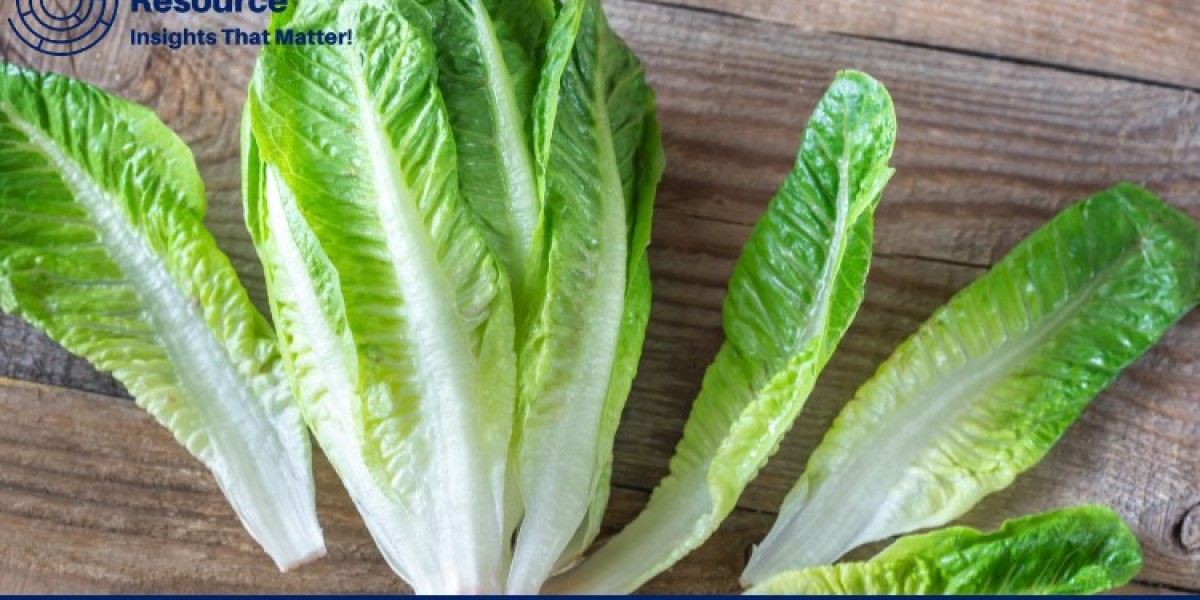The Lettuce Price Trend has become a critical point of interest for consumers, retailers, and agricultural producers due to fluctuating costs and supply chain factors. With the growing popularity of fresh produce and health-conscious diets, lettuce remains a staple in households, food service, and restaurants globally. However, prices can vary significantly based on several factors, including climate conditions, production costs, and consumer demand. This report delves into the Lettuce Price Trend, offering a detailed analysis, recent price news, charts, and an overview of the price index to provide a comprehensive understanding of the lettuce market.
Request a Free Sample – https://www.procurementresource.com/resource-center/lettuce-price-trends/pricerequest
Lettuce Price Trend
The Lettuce Price Trend in 2023 has been marked by notable fluctuations due to a range of influencing factors, from climate events to rising production costs. This year has seen several shifts in lettuce pricing, affected by both supply-side challenges and increased consumer demand.
Seasonal Growing Patterns and Weather Conditions: Lettuce is highly sensitive to weather variations, with extreme conditions like droughts, heavy rainfall, or sudden frosts affecting crop yields. This has been a significant factor in the recent Lettuce Price Trend, as adverse weather has created supply shortages in key growing regions, resulting in higher prices.
Rising Production and Labor Costs: Like many agricultural products, the cost of growing and harvesting lettuce has increased. Rising fuel prices, labor shortages, and higher fertilizer costs have all contributed to higher production expenses, which are passed on to consumers.
Increased Demand for Fresh Produce: With consumers prioritizing healthy diets, demand for lettuce and other fresh produce has grown steadily, especially as the popularity of plant-based diets and home-cooked meals rises. This demand surge, combined with limited supply due to climate factors, has driven up prices.
Supply Chain Disruptions: Global supply chain challenges, from transportation delays to labor shortages, have impacted the availability of lettuce. These disruptions often create price volatility, particularly during peak demand periods, such as holiday seasons.
The Lettuce Price Trend indicates that prices are generally expected to remain high in 2023, especially if unpredictable weather conditions persist in major lettuce-producing regions. However, prices may stabilize as producers adapt to current challenges and expand growing areas to meet demand.
Lettuce Price Analysis
A comprehensive Lettuce Price Analysis is essential for understanding the factors driving price changes and providing insights into potential future trends.
Weather-Driven Crop Yields: Climate events have a direct impact on lettuce supply, with droughts and floods affecting crop health and yield. California, one of the largest lettuce-producing regions, has faced challenging weather patterns, reducing output and raising prices.
Inflation and Rising Production Costs: Inflation has driven up the costs of fuel, fertilizers, and labor, impacting lettuce prices. These rising production costs are a significant part of the Lettuce Price Analysis, as they directly influence market prices, particularly in regions where lettuce production is labor-intensive.
Consumer Demand Patterns: Health trends promoting fresh produce, coupled with the seasonal nature of lettuce demand (which peaks in spring and summer), have led to increased pricing during high-demand months. Restaurants and food services also contribute to demand, especially in periods of increased dining out, such as summer or holiday seasons.
Import and Export Challenges: Lettuce imports play a role in stabilizing supply during off-seasons, but import restrictions or increased tariffs can create price surges. For instance, restrictions on imports from certain countries during unfavorable growing seasons can lead to supply gaps and push prices up.
Regional Price Variations: The Lettuce Price Analysis also considers regional differences, as prices vary based on local production capacity, transportation costs, and market demand. Urban areas or regions heavily reliant on imports may experience higher prices than areas close to major lettuce-growing regions.
Overall, the Lettuce Price Analysis suggests that prices will likely stay elevated if production costs continue to rise and climate challenges remain a persistent issue. However, regions with diverse supply sources or increased local production may experience greater price stability.
Lettuce Price Chart
The Lettuce Price Chart provides a visual snapshot of historical and recent price trends, offering key insights for stakeholders in the agriculture and food industries. Here are some critical points to observe in a typical lettuce price chart:
Monthly Price Changes: Monthly charts reveal seasonal price patterns, with peaks during periods of low supply or high demand. For instance, lettuce prices often increase in winter when supply from cold-weather regions decreases.
Yearly Trends: Examining yearly data in the Lettuce Price Chart helps identify broader trends, such as whether prices are on a general upward or downward trajectory. Over recent years, lettuce prices have shown a steady upward trend, largely due to increased production costs and climate impacts.
Regional Price Comparisons: Charts often display regional data, reflecting price differences across areas based on supply chain factors. For example, prices may be lower in regions closer to major lettuce farms, while urban centers might see higher prices due to transportation costs.
Impact of Major Events: The price chart captures the impact of significant events, such as droughts, pandemics, or economic downturns. The COVID-19 pandemic, for example, led to noticeable price fluctuations, as supply chains were disrupted and demand shifted.
The Lettuce Price Chart is a valuable tool for farmers, distributors, and retailers to make data-driven decisions and anticipate market changes. Monitoring these charts helps identify optimal purchasing times and manage inventory effectively.
Lettuce Price News
Keeping updated with Lettuce Price News is essential for industry professionals, as timely information can help anticipate price fluctuations and adjust strategies accordingly. Key areas of interest in recent lettuce price news include:
Climate-Related Crop Shortages: News about adverse weather, such as unexpected frost or drought conditions in California or Arizona, has a significant impact on lettuce prices. These regions supply a large percentage of the U.S. lettuce market, and any disruptions lead to notable price shifts.
Rising Production Costs: Reports on increasing fuel and labor costs are crucial in understanding the rising Lettuce Price Trend. News about inflationary pressures in agriculture provides insights into expected price increases.
Demand Fluctuations: During peak seasons like summer or holidays, demand for lettuce often rises, leading to increased prices. News about dining trends and health-related preferences can indicate upcoming demand spikes, influencing retail pricing.
Import Restrictions and Tariffs: Updates on import policies and trade tariffs affecting lettuce supply chains are critical, as they directly impact prices. Restrictions on imports from key suppliers or increased tariffs can lead to short-term price surges, particularly in regions dependent on imported produce.
Market Analyst Insights: Analysts regularly publish reports and forecasts regarding the lettuce market, providing valuable insights for stakeholders. These forecasts are often based on historical data, economic conditions, and anticipated demand, offering an expert perspective on the Lettuce Price Trend.
Staying informed through Lettuce Price News enables businesses to plan ahead, manage budgets, and make strategic purchasing decisions.
Lettuce Price Index
The Lettuce Price Index is a useful metric for tracking price fluctuations over time, providing a standardized reference point for comparing price trends and understanding market stability.
Monthly and Annual Index Variations: Monthly updates reveal short-term changes, while yearly comparisons help identify broader trends. The recent Lettuce Price Index indicates an upward movement due to increased production costs and heightened demand.
Impact of Inflation: The price index reflects inflation’s impact on production costs and retail prices. As inflation affects fuel, fertilizer, and labor costs, the price index trends upwards, signaling increased market prices.
Regional Price Differences: Differences in the lettuce price index between regions highlight variations in supply and demand. Urban areas with high transportation costs often show a higher index compared to rural areas near production sites.
Correlation with Seasonal Demand: The price index reflects seasonal demand shifts, such as increased summer and holiday demand. Higher index numbers during these periods illustrate how demand cycles influence lettuce pricing.
The Lettuce Price Index is beneficial for businesses with long-term purchasing contracts, allowing them to adjust prices based on index movements and ensure cost efficiency.
Lettuce Price Graph
The Lettuce Price Graph offers a visual representation of price trends over time, making it easier for stakeholders to interpret market fluctuations.
Identifying Peaks and Troughs: The graph highlights price peaks during high-demand periods and troughs during low-demand months. This visual data helps businesses predict price changes and adjust purchasing strategies accordingly.
Short-Term vs. Long-Term Trends: The graph shows both short-term changes, useful for seasonal planning, and long-term trends, essential for forecasting future costs. An upward trend in recent years suggests that prices are generally increasing over time.
Regional Patterns: The Lettuce Price Graph may display regional differences, revealing where prices are highest and lowest. This geographic data allows businesses to anticipate costs based on location.
Forecasting Future Movements: By examining historical data, the graph helps forecast future price trends, allowing businesses to plan budgets and manage inventory effectively.
Contact Us
Company Name: Procurement Resource
Contact Person: Amanda Williams
Email: sales@procurementresource.com
Toll-Free Numbers:
USA copyright: 1 307 363 1045
UK: 44 7537171117
Asia-Pacific (APAC): 91 1203185500
Address: 30 North Gould Street, Sheridan, WY 82801, USA






